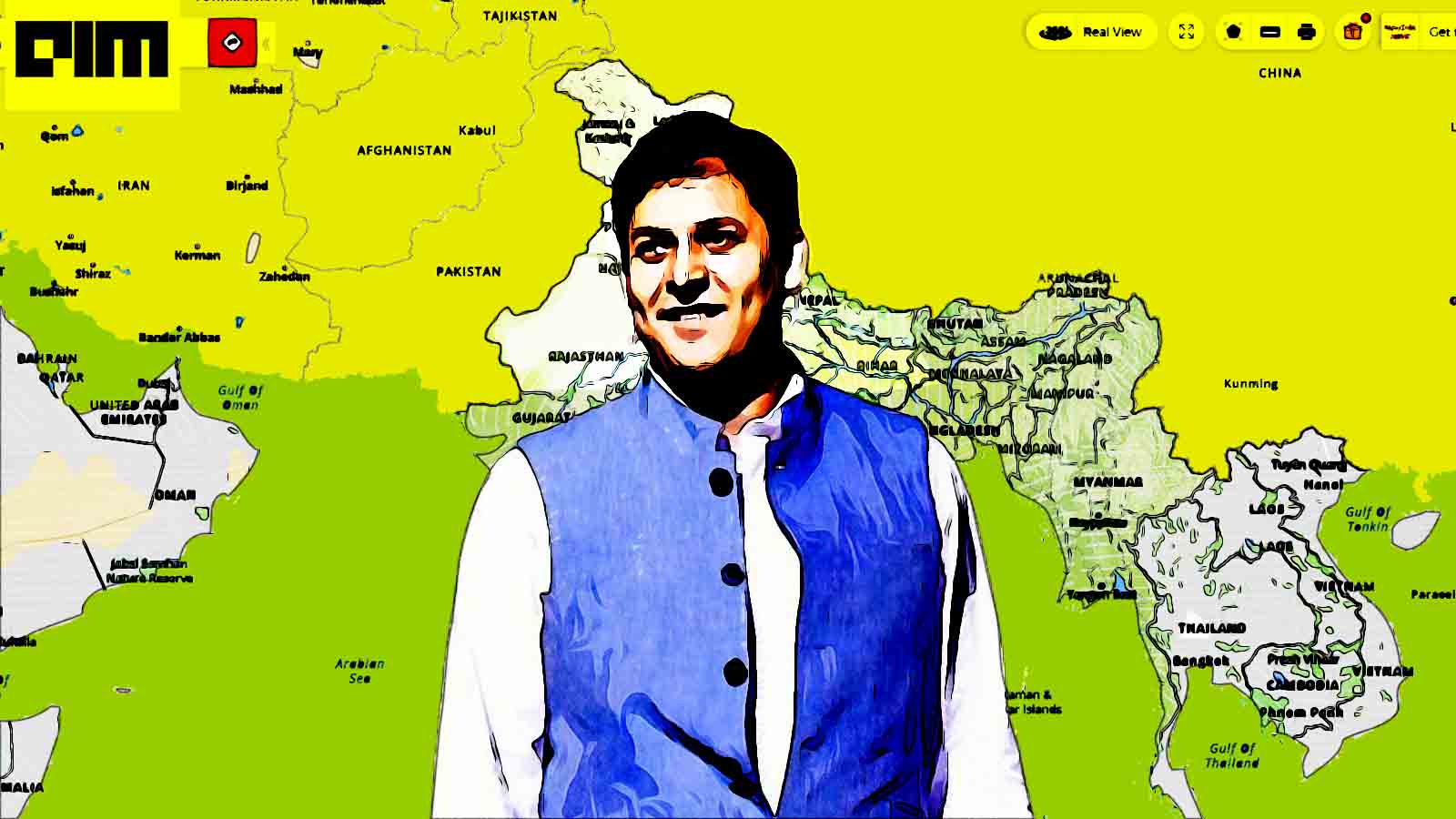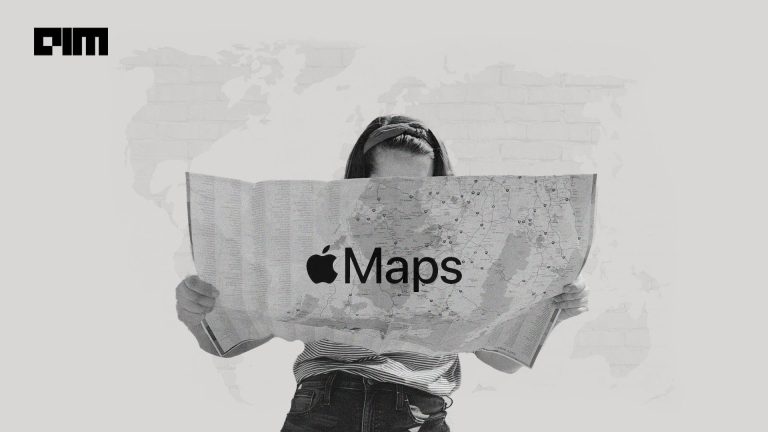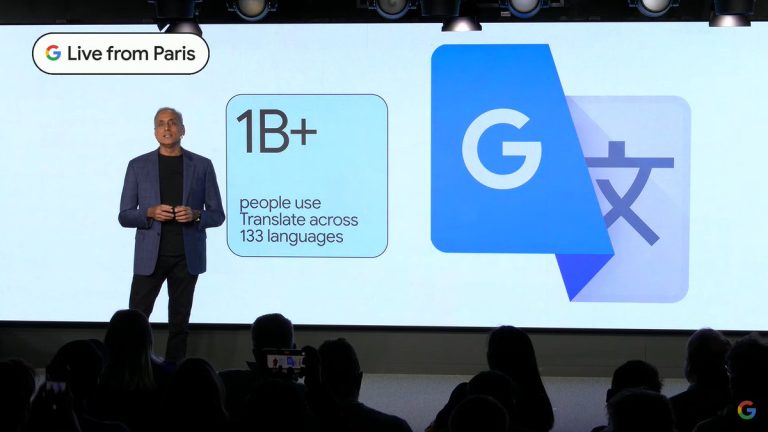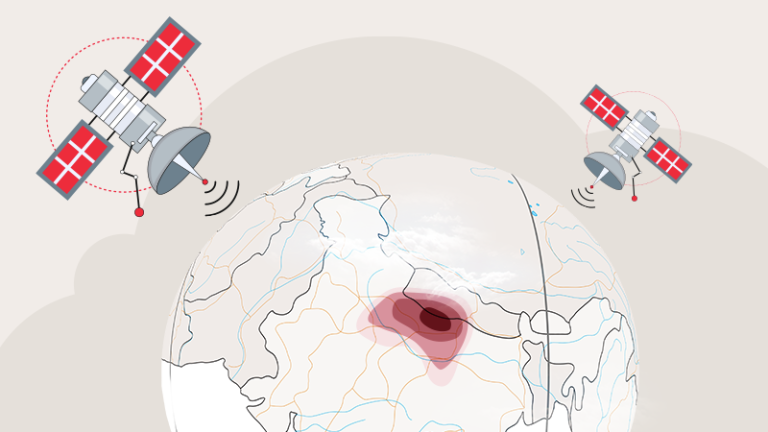|
Listen to this story
|
Last week, Rohan Verma, CEO, MapMyIndia was at a news channel. He was animatedly discussing the growth of the company. During the conversation with the news anchor, he mentioned multiple times how automobile and footwear companies are using the company’s product and reaping benefits from it. The curious anchor finally asked, “I understand the correlation between maps and automobile companies, but what’s the link between maps and footwear companies?”
In response, Verma quipped—“Whether footwear brands or steel manufacturers or retailers, they all need analytics for market expansion.”
The company offers micro location-based analytics to companies from different sectors to understand the market and demography. The company claims that they are the biggest player in the B2B segment and the only player in the market to provide suitable analytics solutions to businesses.
In focus: MapMyIndia
In conversation with Analytics India Magazine, Rohan Verma, CEO, MapMyIndia said, “We have SaaS, PaaS, and analytics platforms that we provide to companies from automotive, telecom, banking, food and beverages, and payment sectors.”
The company offers a whole API stack, IOT devices, and a map app, among other services. In terms of verticals, MapmyIndia addresses four key markets—direct consumers, automotive, mobile Internet, and enterprises and government.
For FMCG companies, it offers services including distribution analytics, field sales monitoring, safety mapping for long-distance routes, consumer location insights for marketing, and more. For telecom and utilities, it provides RF and optical fibre mapping, field force monitoring, line of sight analysis for 4G/5G planning and other services. Similarly, its services spread across logistics, retail, health and pharma, and other sectors.
Developers may fully use and incorporate the potential of GeoSpatial Analytics, GIS, location intelligence, and AI by using these APIs. These APIs enable developers to incorporate the complete functions of the mGIS product into their own applications.
While the company is doing some stupendous work in the B2B segment, it seems amiss from the consumers’ end.
In July 2022, the company made headlines when it announced the launch of Mappls RealView, a fully indigenous All India 360-degree panoramic street view and 3D Metaverse Maps Service.
Is MapMyIndia trying to catch up with Google Maps?
“We have been working on Realview since February 2021 and have also developed a 3D metaverse map, which even Google doesn’t have,” said Rohan Verma.
MapMyIndia has been collecting data for about 30 years. The company initially built the digital footprint of the available offline maps. Later, they physically surveyed the area, visiting different parts of the country.
In the past 30 years, they have successfully built a repository of more than two crore data points, including navigation systems, telematics, and 3D data visualisations.
It claims to have mapped more than 10.77 million distinct locations (Points of Interest), carried out coverage of more than 2.20 million kilometres of roads, 7,268 cities at the street level with home address level data for 94 cities and 5.79 lakh villages.
“We all know about Google Maps because of its reach through android phones. MapMyIndia is just as big but, unfortunately, consumers don’t know,” added Verma.
He further pointed out that the company has tied up with automobile companies such as Mahindra, Hyundai, Ford, Toyota, BMW, and others; payment companies such as PhonePe and Paytm; Airtel; and companies from other sectors. Through the business partnership with companies from different sectors, the company is in close proximity to the consumers, even though they are not directly using it.
MapmyIndia: A company with rich past and present
In 1994, Rakesh Verma and Rashmi Verma, the husband-wife duo decided to build the digital footprint of India. The aim was to put the entire 3.287 million km² of the country on a digital map. To execute this digital transformation, they gave up their jobs in the US and migrated to India.
They bagged Coca-Cola as their first client to build a digital map for them that could solve their transportation problem in India. They later tied up with Cellular One and other companies to solve their respective problems related to topography and demography. The companies also funded the founders to solve their problems.
In 1995, CE Info Systems, the parent company, was formed and MapMyIndia was born. Since its inception, the company has achieved various noteworthy milestones every year.
In 2015, Flipkart also picked up a little over 34% stake in MapmyIndia. The deal was valued at nearly INR 1,600 crore.
In December 2021, MapmyIndia’s parent CE Info made a debut in the stock market.
For Q1 of FY-23, it recorded an increase in net profit of 17.5%. The firm recorded a net profit of INR 24.2 crore during the first quarter of FY-23, in comparison to INR 20.6 crore during the same period last year. Profit margin for the business was recorded at 33.9%.
“This growth is the reflection on the product roadmap and technology development in the company. In the last 27 years, we have successfully built a robust business model, which is paying off,” concluded Verma.


















































































